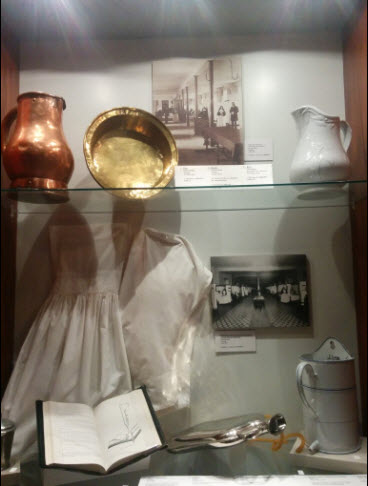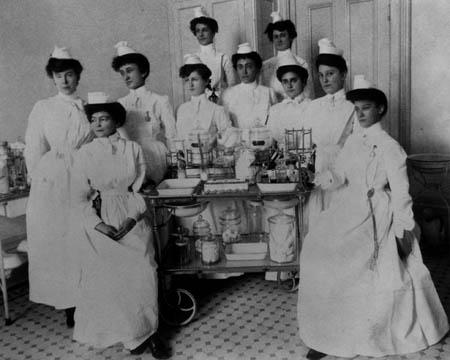Trip to Musée des Hospitalières
September 28th, 2016The visit at the Musée des Hospitalières will help history students assess the reality of women’s lives in nineteenth- century Quebec. As we reflect on the reasons why so many Quebec women decided to remain single and join a religious congregation, we tackle the delicate questions regarding women’s socioeconomic opportunities in the nineteenth century. This visit will address why nineteenth-century women who wanted to pursue a life-long career in the medical field had no other choices than to enter the Congregation des Hospitalières. The visit will first present what it meant to be a cloistered nun in the nineteenth century, the daily life inside the congregation from the moment the young women entered as novitiates to the moment they were accepted by the rest of the community as nuns. Another significant aspect will focus on their work inside the Hotel-Dieu de Montréal which was at the time, the largest hospital in Montreal as well as the various career opportunities opened to these women. Many of these hospitalières fulfilled crucial roles in the medical and scientific organisation of the hospital. As lay women, these positions would have been impossible. One the most important positions that implied some of the most delicate and was that of the apothecary traditionally held by a nun. (Hospital pharmacist).
Project Update
Students were divided into 2 sub-groups, each accompanied with a guide who lectured them for a full hour. Students then had to explore the museum and fill a questionnaire. Many students were surprised to see the lives of cloistered nuns in the 19th century. They visited their parloir , their refectoire, and their cell). The book of entries of the young girls (they had to decipher the handwriting) provided interesting insights on the lives of these women in the 1820s (level of poverty / age they started their noviciate/ the dowry they brought to the congregation/ the tight control exercised by the bishop over these women/ the ability to professionally fulfill themselves inside the congregation, etc.) This visit enables students to assess the role of women in nineteenth-century society and to raise questions about feminism. It also provides a great opportunity to explore history outside of class and to link what we learn in class to the actual historical buildings we cross every day without really seeing them (Hotel-Dieu Hospital and the sisters’ monastery). It is a great opportunity to have students reflect on the rights women gained in the course of the 20th century.




